How to Use Fallen Leaves as Compost, Mulch, and More
Did you know that shredded leaves are a goldmine for your garden? Before you rake all your fallen leaves this fall and send them off to the landfill, I hope I can change your mind and show you all the wonderful benefits and uses of fall leaves in your garden.
Benefits of Fallen Leaves
Shredded leaves are full of organic matter, which is a great way to help your garden produce healthy crops. Fallen leaves also help to condition your soil, especially if your soil is made up of of a high amount of clay, rocks, or sand. Over time shredded leaves can help to change the texture and structure of your soil and can help to condition your soil for maximum growing benefits.
Fallen leaves contain small amounts of natural plant nutrients like potassium, calcium, phosphorus, magnesium, and boron. While leaf litter provides these beneficial nutrients, it is not a great source of the most needed “macronutrients” crops need like nitrogen, phosphorus, and potassium. The small amount, along with the micronutrients it provides, definitely helps, the benefits of leaves come mostly in soil texture, soil structure, erosion control, and creating an earthworm habitat.
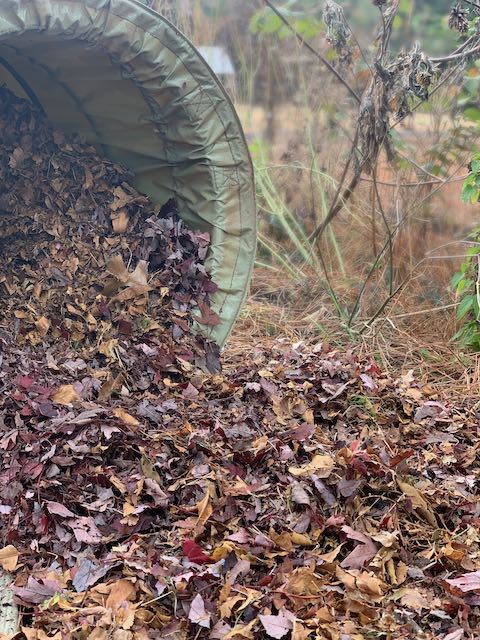
Using fallen leaves in your garden is an excellent way to mimic nature’s process and allow your garden to do exactly what it wants to do naturally. Fallen leaves can take up to 6 months to decompose where they fall, so naturally they will be ready in the spring when it’s time to plant. Another benefit of shredded leaves in your garden is that they are an excellent winter cover for moths and butterflies.
How to Use Leaves in Your Garden
Using fallen leaves in your garden is not only beneficial to your garden, but it’s also economical too! You have a few choices of ways to use shredded leaves.
- Composted
- Added directly to your garden
- Turned into leaf mold
- Protective Mulch
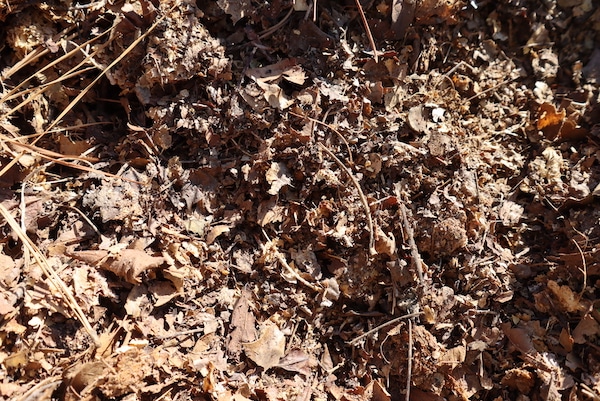
How to Use Leaves in a Compost Pile
If you’d like to use your fallen leaves in a compost pile, here are a few things to consider first. Leaves are high in carbon, but have low nitrogen levels, so their natural decomposition is slow.
To speed up the composting process, you’ll want to add nitrogen because nitrogen is needed by microorganisms to break down the carbon in plant materials like manure and grass clippings.
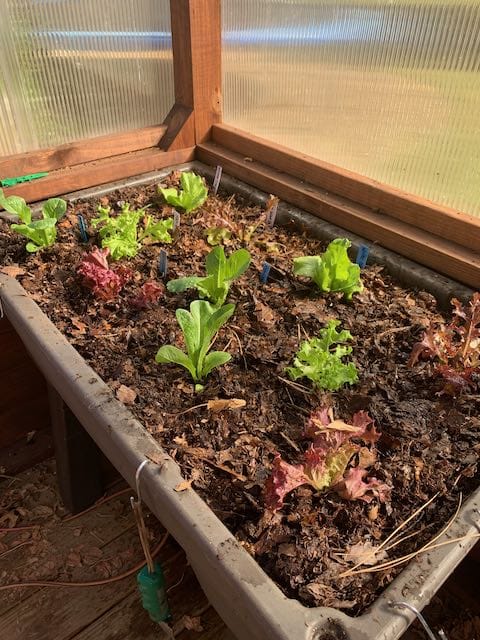
Start by adding 6-8” of fallen leaves and then add a nitrogen source, like grass clippings (untreated), chicken manure, or kitchen scraps. Alternate these layers this until your pile is 3-5’ high. Water each layer lightly until the layer is damp, but not soggy. Next, add a sprinkling of soil or compost to introduce microorganisms and stir occasionally (every 2 weeks is a good starting point), to add in needed oxygen.
Keep in mind that soil microbial activity slows down a lot in the colder temperatures, so the process may pause in the fall and winter, but it will resume in the spring in time to plant your garden.
How to Use Shredded Leaves for Leaf Mold
If you are confused what leaf mold is, it’s simply partially decomposed leaves and is another process of decomposition for leaves only that is fungal-driven. (The process above is bacterial-driven.)
This process of fungal-driven decomposition is a much slower process and happens when the compost is cold – not hot. This process is different from using leaves in a compost pile.
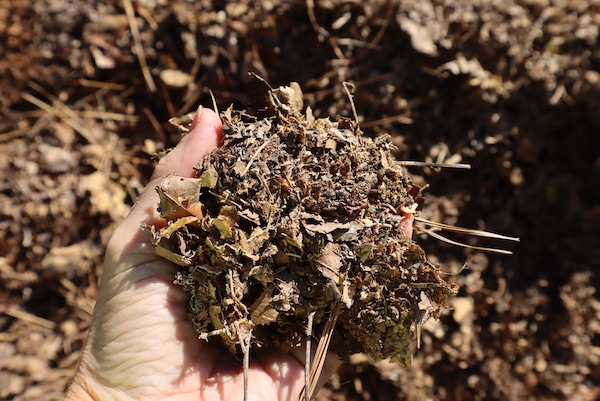
The leaf mold process is pretty simple to do. You’ll want to use either shredded or whole leaves that are kept in bags, containers, or wire mesh cages. The leaves need to be kept moist to allow fungi to colonize. Leaves can be used on top or turned in the soil as a soil conditioner, which can help remediate soil that has texture issues like heavy clay or mostly sand.
How to Use Fallen Leaves Directly in Your Garden
Another great way to use fallen leaves is to add them directly to your garden. For best results you’ll want to shred the leaves before you add them to the soil. Shredding your leaves speeds the breakdown process of the leaves and keeps them from packing down and smothering your plants — like perennials that are already in your garden. Shredding also helps the leaves from blowing away.
How To Shred Your Fallen Leaves
Thankfully, shredding your fallen leaves is a quick process and there are a lot of ways to get the job done. Here are a few easy and quick ways to shred your fallen leaves:
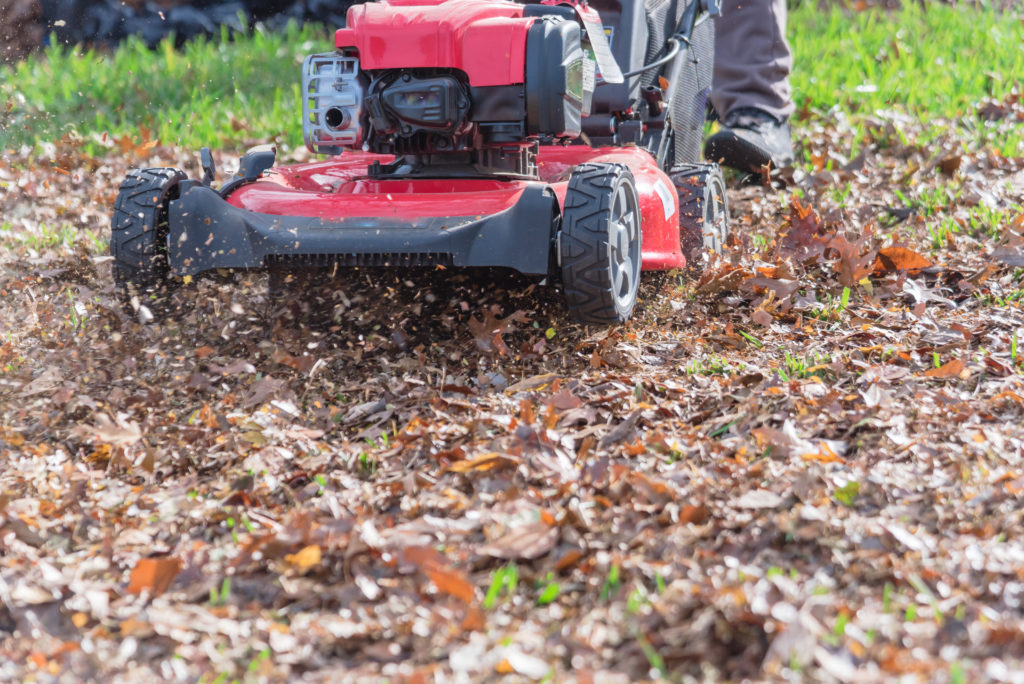
- Mow over them carefully with a mulching blade and rake them up.
- Mow over them with a bagger attachment.
- Collect the leaves into a garbage can and use a weed eater to shred them.
- Use a leaf shredder – but make sure you don’t try to shred pine needles or sticks.
My personal choice is to use a leaf shredder. Though the purchase of one is a small investment, it’s one that will last for years. If you have a source of fallen leaves, it will pay for itself in the mulch you don’t have to buy in the future. This is the one I have used for years (affiliate link).
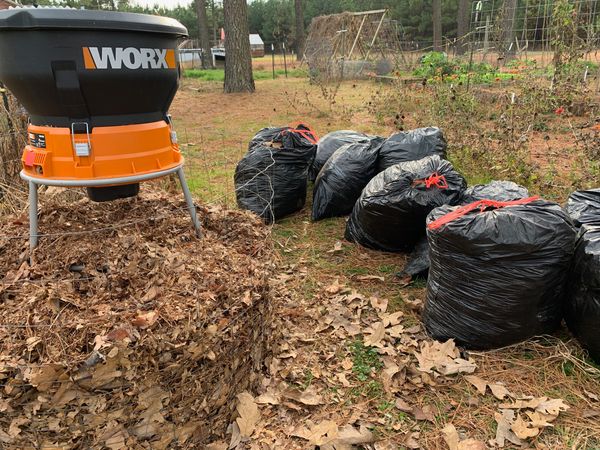
What If I Can’t Shred My Leaves?
If you can’t shred your leaves, then bag the leaves and use them as mulch when the spring comes, but apply them after the soil has warmed up. Experts at Purdue University suggest that keeping them on top of your soil can leave the soil too cool and wet to work in the early spring. In the fall you can mix into your soil, but I’d be careful to do so if it has not decomposed into leaf mold yet – to be safe, just keep the leaves on top of your soil or on the bottom of a raised bed with soil above it.
How to Use Leaves As Protective Mulch
Fallen leaves are an excellent choice as a natural protective mulch for your other garden crops and are good as insulating cover for some perennials and fall-planted root crops. Keep in mind, they are not great as mulch for strawberries and herbaceous perennials because they matte down and don’t provide much protection for them. Straw or pine needles are a much better choice as mulch for strawberries and other herbaceous perennials.
Not only do leaves provide protective mulch, they also moderate soil temperatures from winter extremes. The best way to use leaves as mulch is to add a 3-6” layer after hard freezes have begun.
Other Leaf Facts To Consider
While using shredded leaves is a wonderful way to condition your soil and save money, there are few other things to consider before you start bagging every leaf that falls in your yard. Oak leaves are slightly acidic, but according to Iowa State, this should have little effect on pH.
Black walnut leaves are generally considered acceptable to use in your garden, but some of your garden plants do not like them very much, such as: asparagus, eggplant, cabbage, pepper, potato, rhubarb, tomato, apple, blackberry, blueberry, pear. If you have any of these crops in your garden already, it might be best not to use any shredded black walnut leaves in your soil out of precaution.
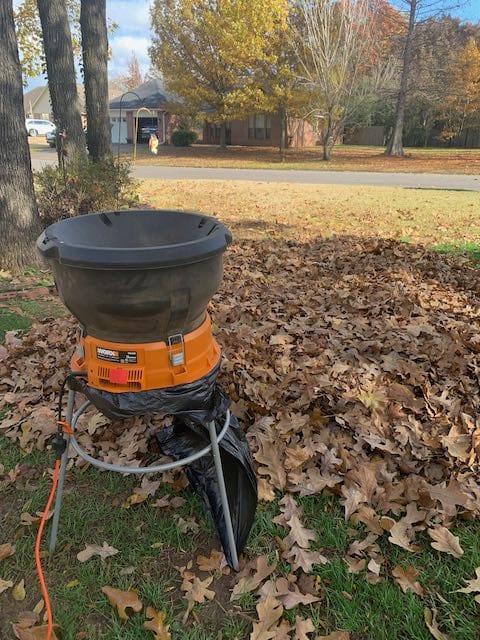
Whatever you do with your leaves, just don’t burn them. This only causes air pollution and releases particles in the air that are problematic for people with respiratory issues. Let’s also keep leaves out of landfills because they break down in a low oxygen environment and release methane gas, which is a greenhouse gas that contributes to climate change.
Shredded Leaf Goldmine
Using shredded leaves in your garden is more valuable than you might have realized. Fallen leaves are a natural goldmine and offer a lot of valuable benefits, from enriching your soil with essential nutrients to providing a natural cover for your crops. Whether you choose to compost them, create leaf mold, add them directly to your garden, or use them as protective mulch, you’re making a positive impact on your garden’s health and saving money!

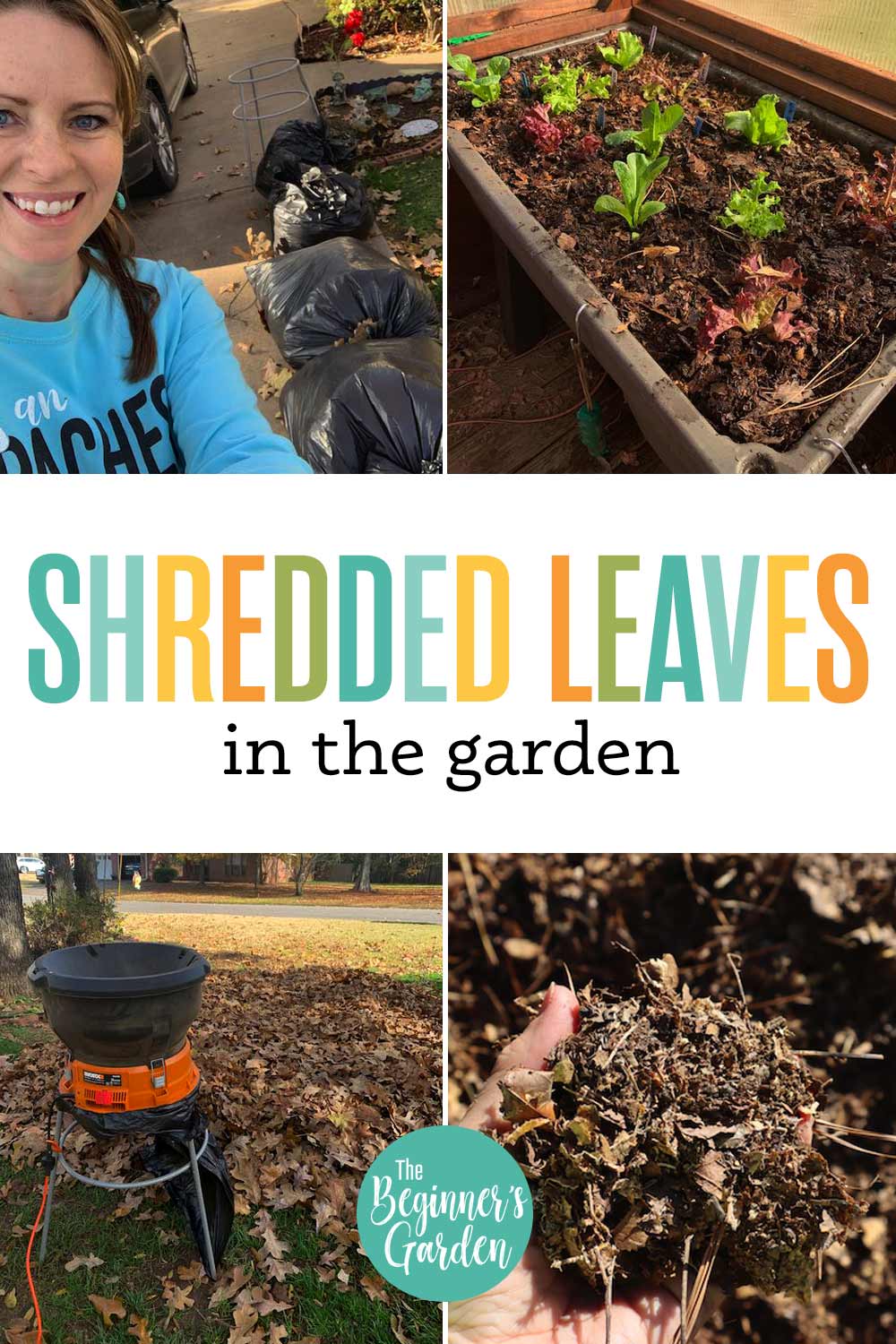
Thanks for the great info, Jill! If I want to use this fall’s leaves for next year’s garden do I have to put them in bags and keep them dry or can I just mulch them and put them in a pile? Thanks!
Either works! I have found shredding necessary if keeping in a pile, though, because they’ll have a tendency to blow away if they are large, unshredded leaves.